Tesla Photos and Reports
by Carl Morrison
Carl@TeslaTouring.com
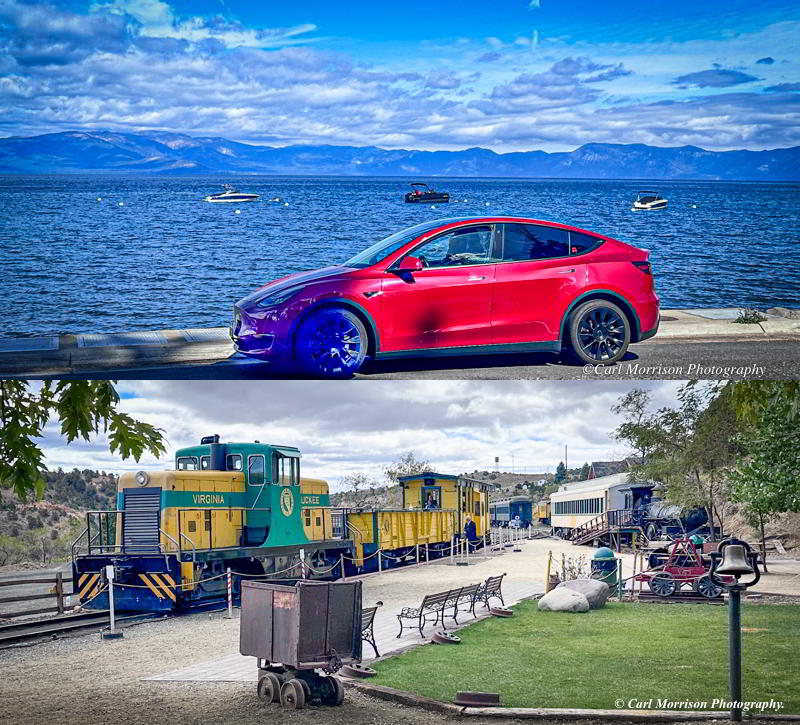 |
Sep 24, 2023 - Tesla 1,000-mile round trip to ride the Virginia and Truckee Railway: Photos & Text by Carl Morrison. Headquartered in Virginia City, Nevada, the Virginia and Truckee (V&T) Railroad is one of the most famous short lines in the history of the United States, so much so that it uses the service mark 'The Queen of Short Lines'. The railroad operated until 1950 and then was dormant for more than two decades. But in 1972, private owners began the process to reopen V&T as a heritage railroad; and in 1976, trains would resume operating. Shortly thereafter, they acquired a mainstay for the line, Virginia and Truckee #29. The Virginia and Truckee Railroad is a privately owned heritage railroad, headquartered in Virginia City, Nevada. Its private and publicly owned route is 14 miles (23 km) long. When first constructed in the 19th century, it was a commercial freight railroad (reporting mark VT) which was originally built to serve the Comstock Lode mining communities of northwestern Nevada. At its... Read More>> |
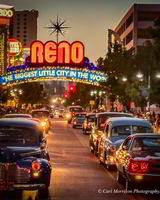 |
August 2-5, Tesla 2020 Model 3 - 1,000-Mile Road Trip - Topic: Report & Photos by Carl Morrison. Using Tesla Superchargers and free hotel charging. Orange County, California, to Reno, Nevada, Round Trip via Hwy 395 for the 2023 Hot August Nights 5,500-vehicle classic car and rock and roll show. I. Planning the Tesla Road Trip, II. Tesla 1,000-mile Road Trip to Hot August Nights and return home, a. RIVIAN Chargers, b. Return Trip with Summary Statistics of Tesla Tip, III. Hot August Nights in Sparks and Reno Nevada, a.Swap Meet, b.Grand Sierra Resort (GSR) Show Cars, c.Sparks Downtown Cruise, d.National Automobile Museum, Reno including early electric vehicles plus Tesla semi and historic Tesla cars, e. Reno Downtown Show and Shine, f. Motorsports Action Groups (MAG) Auction, g.Reno Downtown Cruise, IV. Tesla free charging in Reno/Sparks, Nevada, V. Keep the full power of the sun charging your Tesla - Solar Panel Cleaning. Planning the Trip. I like to use A Better Route Planner to plan the entire trip (very good details) and Tesla's onboard computer for charge-to-charge navigation during the trip. We charged about every 100 miles on this trip. ABRP now gives alternative routes (in grey) plus your preferred route based on quickest arrival. In the preferences you set your state of charge (SOC) at arrival at the Tesla Superchargers and... Read More>> |
 |
May 19, 2023 - Electrify Expo: Industry/Press Day: Report & Photos by Carl Morrison. Long Beach Convention Center, CA - ELECTRIFY EXPO is a festival where you can experience and demo your favorite electric car, truck, e-motorcycle, e-bike, e-scooter, e-skateboard, e-surfboard, e-foil and other electric brands as they show off their latest products and technology. Visit their fun interactive displays, talk with EV experts, and best of all, take a test drive on one of our thrilling demo courses. Kids, check out our huge Kids Zone for 2023 filled with electric go-carts, e-bikes + more... Read More>> |
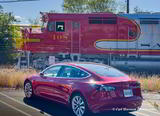 |
May 6, 2023 - Trains, Trucks and Teslas: Photos & Text by Carl Morrison. When the Southern California Railway Museum (formerly Orange Empire Railway Museum) in Perris, California, announced its Antique Truck Show on May 6, 2023, I decided that it would be a good place for a Tesla Road Trip from our home in Placentia, Orange County, California. Even though I have plenty of range for a round trip in our Model 3 Tesla, I did stop for a photo of the Lake Elsinore Outlet Mall's Tesla Superchargers at the junction of Hwy 74 and I-15. I remembered that my good friend, Don Drummer, RIP, would have been an excellent person to ride shotgun on this trip since he liked to model both trains and antique trucks... Read More>> |
 |
Feb 11, 2023 - Masterson's Car Care and Detailing Training Class: Report & Photos by Carl Morrison. This was a free event held at their shop at 4308 East La Palma Avenue, Anaheim, California 92807. Special detailing tech class hosted by car experts on Saturday, February 11, 2023, 10am-1pm, that included donuts, coffee, music, tech sessions and prizes... Read More>> |
 |
Jan 28, 2023 - Aptera Headquarters Tour, Carlsbad, California: Report & Photos by Carl Morrison. This report on the tour of the Aptera "Autocycle" Headquarters includes: Photos of the Aptera vehicle "SOL" and other versions in its development; Videos of Jay Leno's and Sandy Munro's evaluation of the Aptera; and The Keynote address of Aptera CEO Chris Anthony at the EVA Annual Meeting... Read More>> |
 |
Jan 5, 2023 - New Carlsbad Tesla Supercharger: Report & Photos by Carl Morrison. A new Tesla Supercharger location n Carlsbad, California, which went live on 17 Aug 2021, 16 V3 stalls; Compared to adjacent EVgo charger; Compared to home charging. We have always taken advantage of the nearby Tesla Supercharger on El Camino Real, about 6.8 miles from... Read More>> |
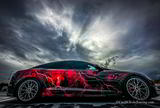 |
Dec 4, 2022 - Autopia 2099 Winter 2022: Report & Photos by Carl Morrison. "A show for all cars, trucks, motorcycles, bicycles, and mobility solutions powered by electrons." Petersen Automotive Museum, Los Angeles, California. Table of Contents: 1.What is Autopia 2009 - Winter 2022?, 2.Petersen Automotive Museum, Los Angeles, California inside and out, 3.Car Photography Tips by Pro Car Photographer Mark McCauley, 4.Private individual entries, 5.1950 Tesla-powered Jaguar MarkV, 6.Nissan, sponsor of the event, 7.2023 Volkswagen ID Buzz, 8.2020 Ferrari FXX K EVO, 9.Links... Read More>> |
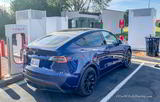 |
Oct 23-29, 2022 - Renting a Tesla from Turo.com in Charlotte, North Carolina: Report & Photos by Carl Morrison. Purpose of the Trip: Our trip to Charlotte, North Carolina, and Roanoke, Virginia, from Southern California, to visit relatives of me and my wife, would require a rental car. Since my brother and wife in Charlotte had been interested in our 2020 Tesla Model 3, I decided to rent a Tesla in Charlotte so they could see what our and our son's 2021 Tesla Model Y were like. Needless to say, they were impressed and by taking them on an outing to the North Carolina Transportation Museum, I could show them how easily it was to use the Tesla Superchargers. First get the Turo and the Tesla Apps. I rented the 2021 Tesla Model Y through the... Read More>> |
 |
September 24, 2022 - National Drive Electric Week: Report & Photos by Carl Morrison. Table of Contents: I. "Clean: Air, Ride, and Money" location of the Event, II. Plug-In-America Survey of EV owners and intenders - Results, III. National Drive Electric Week at Diamond Bar, California, September 24, 2022. Very surprised that 92% of EV owners charged at HOME! 24% of owners have only a Level 1 (regular 110 volt plug) for charging at home! 25% Non-Tesla owners said... Read More>> |
 |
September 18, 2022 - How we got free lifetime charging for our two Teslas and a 30% tax credit for the investment: Report & Photos by Carl Morrison. Solar Panel Installation Table of Contents: I. The plan to add 40 solar panels to our 10-year old 16 solar panels, II. The one-day installation, III. The specifics about the solar panels and microinverters on each panel to get the 25,150 kWh yearly production, IV. Main Panel Upgrade and accompanying combiner box, V. Two Time-lapse videos of the whole installation process. Jacob Hoffman, Green Day Power, Corona, CA, 949 233 5667 (Tell him Carl Morrison sent you.).. Read More>> |
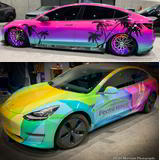 |
September 10, 2022 - Fully Charged LIVE San Diego 2022: Report & Photos by Carl Morrison. I chose to attend this Show and do a report for TeslaTouring.com because it was for more than Teslas. It would have panel discussions on important subjects about Electric Vehicles and Solar/Electric Homes, both of which I own. Additionally, there would be electric vehicles on display, especially the CANOO (GOEV). Finally, this convention was in San Diego, California, only 2 hours from our home and I'd be able to drive our Tesla 3 for a couple of hours on Autopilot each way. Table of Contents: 1. Session titles and vendors, 2. Ride and Drive vehicles, 3. Electrify America Keynote Address, 4. Canoo - Electric Vehicle, 5. Will America take Tesla to its heart?, 6. California -- is it leading from the front?, 7. Do we have enough clean energy to electrify everything?, 8. Vendors and Booths. As I stood in line at the San Diego Convention Center, directly across the street from the entry line to enter the convergence was Gaslight Square. The convention notes said if the one place to get food in the convention was too crowded, we could... Read More>> |
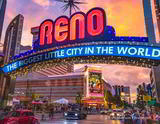 |
August 3-7, 2022 - Tesla Model 3 - 1,000+-Mile Emissions-Free Road Trip: Report & Photos by Carl Morrison. Orange County, CA, to Reno, NV, Round Trip via Hwy. 395. For Reno's 2022 Hot August Nights 5,000+-vehicle classic car show. I. Planning the Road Trip, II. Tesla Road Trip to Hot August Nights, a.RIVIAN Chargers, first sighting, III. Hot August Nights in Sparks and Reno NV, a.Swap Meet,b.Grand Sierra Resort (GSR),c.Brightwork on show cars at Grand Sierra Resort,d.Reno Downtown Cruise,e.Show Cars at the Pepper mill,f.Show Cars at Atlantis,g.Motorsports Action Groups (MAG) Auction, IV. Tahoe City, Lake Tahoe,CA, a.Tour of New Construction Lake Tahoe,CA, b.Ehrman Mansion, Pine Lodge, Lake Tahoe, V. Tesla Road Trip Tahoe Lake Tahoe to Orange County, CA, via Hwy 395, VI. Summary of Travel Statistics, VII. Tesla free charging in Reno/Sparks NV... Read More>> |
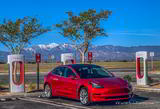 |
April 8-9, 2022 - Teslas to Trains - Photographic Society of America (PSA) Conference, Palmdale, California: Report & Photos by Carl Morrison. I. Tesla Travelogue O.C., California, II. Randsburg, California, "Living Ghost Town", III. Tehachapi Loop rail fanning, IV. PSA SoCal Chapter Event April 9 Palmdale, California, V. Tesla Palmdale to O.C., California, My Tesla drive on Mojave Desert highways from Orange County, California, to Randsburg, Mojave, Tehachapi RR Loop, Palmdale and back to Orange County via Pasadena. Many non-Tesla owners think that you cannot take a 400+ mile trip on state highways (not Interstates) and have enough Tesla Superchargers to not run out of battery. As you can see from the "A Better Route Planner" below... Read More>> |
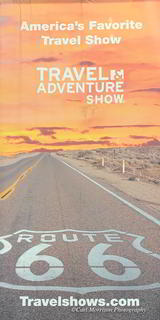 |
March 12-13, 2022 - LA Travel and Adventure Show, 2022: Report & Photos by Carl Morrison. I attend the Travel and Adventure Show each year when it is in Los Angeles. I get a press pass to attend in return for a report and photos for TrainWeb.com/carl and teslatouring.com/carl/carl. It is held on Saturday and Sunday at the Los Angeles Convention Center; Traffic is relatively light to drive my 2020 Tesla 3 there for the day. I like to look for tourist trains to mention to my TrainWeb.com readers and there are always California destinations represented as well as Western US destinations to which we could drive our Tesla's or other EVs. (Gas this day is nearing $6 a gallon.) A highlight for me is also hearing the travel writers, this year including Peter Greenberg, and Pauline Frommer. Notes from Peter's talk: Because of the attack on Ukraine by Russia going on on this date, 60% of the air space is off limits in reference to travel. There has been a 20% increase in air fares in the last 10 days; get your tickets for future flights now and use points (which are being devalued by airlines). He stressed, "Have a conversation" with hotels, airlines, etc.because using only the Internet limits your possibilities. If the Internet says there are only 2 rooms left, that is a lie, it is only 2 rooms that have been allotted to Internet inventory. Never buy travel insurance from a cruise line or airline; buy it from a Travel Agent. There are 196 countries and only 5 you should not go to now. "Have a conversation" with your car rental company. In Hawaii they are renting cars for $1,200 a day. Because of the recent ship fire and sinking of a load of Lamborghini's, Porsche's, high end VWs, etc. Ask the car rental company, "Has this car been in a flood." And because the car agencies sold cars in COVID and listed them as stolen, ask, "Am I driving a stolen car?". When you rent a car take time-coded photos on your phone of all dents and scratches inside and out and go back and have agent verify them before taking your rental car out. Peter loves AMTRAK. He mentioned the $500 USA fare ($250 for kids). He says there are two kinds of luggage, "Carry on and Lost." If resort fees are on your bill, and... Read More>> |
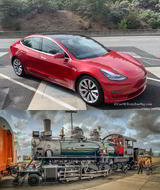 |
March 16-22, 2022 - Tesla 2,000-mile Road Trip from Orange County, California to Corvallis, Oregon for Winterail 2022 and the TRAINS magazine/Santiam Photo Excursion on Albany & Eastern: Report & Photos by Carl Morrison. Including I. Tesla Travelogue of 1,000 miles from Orange County, California, to Corvallis, Oregon, via I-57, I-210, and I-5, II. TRAINS magazine photo excursion on the newly restored 1924 Baldwin 2-6-2 No. 205 in Lebanon, Oregon, III. Winterail 2022 in Corvallis, Oregon, IV. Tesla Travelogue from Corvallis, Oregon, to home in Orange County, California. Tesla Travelogue of 1,000 miles from Orange County, California to Corvallis, Oregon, via I-57, I-210, and I-5. Fellow members of our Train Travel Meetup group in Fullerton, California, told me about Winterail and the fact that in 2022 it would be 2 days to accommodate all the rail-related photo shows that could not take place during COVID. Because I had about 600 miles of free charging at Tesla Superchargers, which would expire in April, I asked by railfan-buddy, Don Roe, if he would like to go on a road trip. We have been taking Amtrak trips together for over 20 years, but this would be our first car trip. I used A Better Route Planner to make plans to drive our Tesla 3 the 1,000 miles to Corvallis, Oregon... Read More>> |
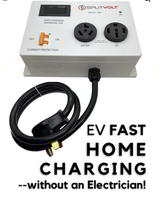 |
January 9, 2022 - How Will You Charge Your Tesla?. The least expensive way is to charge at home. The quickest solution is to use your dryer plug, and split it with the SplitVolt (1). This allows you to use your dryer in one of the two plugs on the Split Volt and charge your EV in the other. The SplitVolt has the circuitry to make sure you are not using the dryer at the same time. If you are not using the dryer plug for a dryer, use the dryer outlet on the SplitVolt for a second Tesla. The SplitVolt gives you a readout of how many kilowatts you are using and if you know when you are drying and when you are charging, you can calculate the cost of each. (The original outlet gives no reading of how much electricity you were using for the dryer.) Since you can set your Tesla internally to charge any time; set it to charge at the lowest rate time, plug it in each night, and forget it. If your dryer plug is in your garage, you will probably need an extension cord (2) to reach your Tesla's mobile connector. (If your dryer is in a room next to the garage, as mine was, have the plug moved through to the garage side of the wall.) The solution becomes: Plug in the SplitVolt (1) to the dryer plug; plug in the extension cord (2) to the SplitVolt, plug in the mobile connector that comes with the Tesla (3) with a 10-30 adapter (4) to the extension cord, and you are in business! If you do not use your dryer plug for a dryer, you can use... Read More>> |
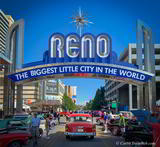 |
September 3, 2021 - Tesla Model 3 Road Trip to Lake Tahoe: Report & Photos by Carl Morrison. 1,400-Mile Emissions-Free Road Trip; Orange County, California, to Reno, Nevada, via Hwy. 395, and return via Hwy. 101 For Reno's 2021 Hot August Nights 5,000+-vehicle classic car show and Virginia & Truckee Railroad steam train ride. This is my 18th report on our 15-month-old 2020 Tesla 3 Standard Range Plus, rear wheel drive. In this report, I cover: 1. Introduction to this "Paul Clifford Memorial Hot August Nights Trip", 2. Driving a Tesla Model 3 fully-electric car about 500 miles following Hwy. 395 from Orange County, California, to Reno, Nevada, for Hot August Nights, 3. Visiting Virginia & Truckee Railroad for 2 rides from Virginia City to Gold Hill a 35-minute round trip- behind Steam Locomotive No. 29 - one ride in a passenger caboose and one ride in the steam locomotive's cab, 4. Tesla Model 3 trip from Sparks, Nevada, to Orange County, California, via I-80 and Hwy. 101, over 600 miles... Read More>> |
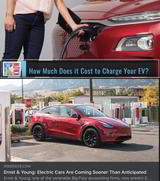 |
August 1, 2021 - Tesla Model 3 Continues to Lead: Photos & Text by Carl Morrison. This is my Seventh report on our 13-month-old 2020 Tesla Model 3, Standard Range Plus, Rear-Wheel Drive, 19" wheels, Multicoat Red, and son, Matthew's purchase of a Model Y ordered May 11, 2021 posted at teslatouring.com/carl/carl. In this report I cover: 1)How Much does it cost to Charge an Electric Vehicle, 2)Complete Tesla Guide for Model 3/Y, 3)Best Selling EVs 1st Quarter of 2020 to 1st Quarter of 2021, 4)What's The Best Electric Car? Tesla Dominates In The Ultimate Comparison, 5)How is the Tesla business model working?, 6)What is the predicted date for the end of the Oil Age, 7)Study: Car Buyers Are Opening Up To EVs, Tesla Most Trusted Brand, 8)Can Hybrids reach the Paris Agreement's Goal? If not, what can reach that goal?, 9)Tesla releases big, new software update with Disney+, Car Wash Mode, hotspot, 10)My Referral Number and more... Read More>> |
 |
July 15, 2021 - Tesla Model Y Purchase Experience using a Referral Code: 16th Report & Photos by Carl Morrison. 1)Buying a Tesla with a Referral Code, 2)Formula E street racing series' manufacturers making street prototypes using their track racing research, 3)Which Formula E manufacturers have street models?, 4)How much does it cost to charge your EV?, 5)Before you take delivery of a Tesla, or any Electric Vehicle, be prepared to charge at home, 6)Are Electric Cars Worse For The Environment?, 7)Afterlife of EV Batteries, 8)Are Electric Cars Really Better for the Environment?, 9)How Miserable Is A Tesla Road Trip?, 10)This Rookie Mistake Almost Left [them] Stranded, 11)Hypermiling is the sport of squeezing a gallon of gas until it screams, 12) How many miles can I drive after my electric vehicle says zero miles left?, 13)Non-Tesla Charging Challenges, 14)My Referral Number... Read More>> |
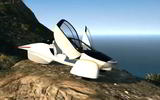 |
 |
Mar 28, 2021 - Tesla Model 3 Safety, Satisfaction, Comparisons, and Aptera Never Charge electric auto-cycle update.: Photos & Text by Carl Morrison. Tesla Vehicle Safety Report Q4 2020, Why Teslas are the Safest car on the roads?, The Most Satisfying Car by owners of 27 Brands - Tesla Model 3, Top 20 Global EV sales in 2020, Differences in A Winter Tesla Road Trip compared to the same drive in summer, Model S and X changes for 2021, For Mustang Mach-E compared to the Tesla 3 and Y, Tesla Auto Insurance, Charging stations to be an added amenity in new Multifamily buildings, and much more... Read More>> |
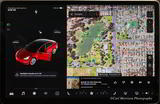 |
February 1, 2021 - Tesla Model 3 - Over-the-Air Updates, Acoustic Tires, and Aptera - The Most Efficient Electric Vehicle: Report & Photos by Carl Morrison. Report 13 including OTA Software Updates 2020.48.26,48.30 & 48.35.5, Driving Experience notes on "car keys" and Tesla Tires, Jay Leno on Why Tesla vehicles are successful, Every New Electric Vehicle Model for Sale in the US, Aptera - The world's most efficient soalr EV, and more... Read More>> |
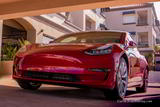 |
Dec 15, 2020 - Tesla Model 3 Owning, Photographing, and Road Trip Experience: Report & Photos by Carl Morrison. Report 12 including Photographing, 5-Star Safety Rating Meaning, Model 3 2021 changes, Outside Speaker, Future of Gas Stations?, Plug-in-Hybrid Cars for Sale, Formula E, EVs not less polluting debunked, Tesla heated seats for back pain... Read More>> |
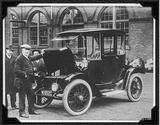 |
Nov 15, 2020 - Tesla Model 3 Owning and Road Trip Experience: Report & Photos by Carl Morrison. Report 11 including "Refresh" items on the Model 3 in Oct 2020, Every New Electric Vehicle Model for Sale in the US, Tesla Model 3 crushes Dodge Charger in 1-year review of cost of operation as police car, Concept drawing of the $25,000 Model 2, and much more... Read More>> |
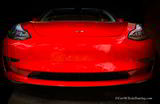 |
September 30, 2020 - Tesla Model 3 Owning and Road Trip Experience: Report & Photos by Carl Morrison. Report 9 including first Tesla 3 Police Car, Tesla Club of OC, Solvang, Packing Model 3 For Road Trip, 10 Reasons To Buy An EV, Software Update, Model 3 60K mile Operating Costs, Battery Degredations Stats, Tesla Semi Truck, Size Comparison of Model 3 to S and Y to X... Read More>> |
 |
September 10-13, 2020 - Tesla 3 - 1,000+ mile Road Trip Orange County to Lake Tahoe via Hwy. 395, and return via I-5 : Report & Photos by Carl Morrison. Driving a Tesla Model 3 fully-electric car 500+ miles following Hwy 395 from Orange County to Homewood, CA on... Read More>> |
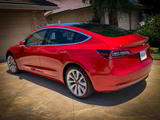 |
Sep 5, 2020 - Tesla 3 Owning Experience: Report & Photos by Carl Morrison. Naming your Tesla, A plan to install electric truck charging stations up and down the West Coast, Pikes Peak run in a Model 3 in 2020, AM Radio absence in newer cars - work around, Tesla, or any EV, Advantages, Why is Tesla 3's screen in the center?, Solar Roof by Tesla with Power Walls, and much more... Read More>> |
 |
August 15, 2020 - Tesla 3 Voice Commands, Model S Racing, Tesla 3 in Pikes Peak Hill Climb Experience: Report & Photos by Carl Morrison. including: Voice Commands, Over Air Software Updates, Teslascope User Data Site, Inside First-Ever Tesla Race Car... Read More>> |
 |
August 5, 2020 - Tesla 3 Rebates, Clubs, and Formula-E Experience: Report & Photos by Carl Morrison. includes: Clean Air Rebate Program, Owners' Club, Phantom Drain, Clean Air Vehicle Decals, Model 3 or Model Y, Best Selling EV, kWh defined, Formula E, Tesla Mobile Service, OC & LA Tesla Club Outings... Read More>> |
 |
July 26, 2020 - Tesla 3 Energy Management Experience: Report & Photos by Carl Morrison. includes: MPG Equiv, Energy usage at home, Depreciation, Rear view cameras, Crumple Zone, Dual vs Single Motor Compare, Over the air updates, Safer than human, Tesla App... Read More>> |
 |
June 19, 2020 - Tesla 3 New Owner Experience: Report & Photos by Carl Morrison. The first few weeks of ownership of our Red 2020 RWD Standard Range Plus 19-inch sport wheels Tesla 3, I researched... Read More>> |
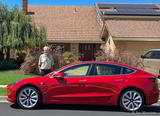 |
June 9, 2020 - Tesla 3 Delivery Experience, Buena Park, California: Report & Photos by Carl Morrison. This report will explain the Delivery Experience of that Tesla Model 3 during the 3rd month of isolation of COVID-19. I had completed all paperwork that I could and the next step, Tesla Insurance, could only be... Read More>> |
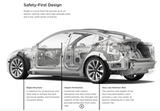 |
June 21, 2020 - Some "Bare Bones" information about the Tesla 3: Report & Photos by Carl Morrison. One of the first things I did after ordering our Tesla 3 was to download the Owner's Manual. It is a .pdf file or 220 printed pages. I downloaded it to my travel laptop for on the road use. You can also ask Tesla-related... Read More>> |
 |
May 17, 2020 - Purchasing Experience of a Tesla 3: Report & Photos by Carl Morrison. Steve Grande was the first Tesla owner I've known. Some time in 2015 he asked if I'd like to test drive his new 2015 Tesla Model S P85D in downtown Fullerton, California after a Train Travel Meetup that he sponsors. Later that year... Read More>> |
 |
Aug 7-10, 2019 - "Hot August Nights": Report & Photos by Carl Morrison. For this approx 1000 mile Placentia CA to Reno NV round trip to the 6,000+ classic car show, we took my 1956 Chevrolet with the Tesla Model X. Since this is a classic car show, I registered the... Read More>> |
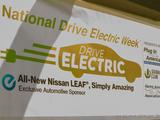 |
September 8, 2018 - National Drive Electric Week Event, Los Alamitos, California: Report & Photos by Carl Morrison Registered were 7 Tesla Model S, 6 Tesla Model 3, 4 Tesla Model X, 4 Tesla Roadster, 5 Nissan Leaf (2011-2017), 4 Chevrolet Bolt, 2 Volkswagen e-Golf, 2 BMW i3 Rex and other fully electric... Read More>> |
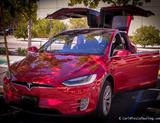 |
September 15, 2018 - National Drive Electric Week - Diamond Bar: Report & Photos by Carl Morrison. Registered were 12 Tesla Model 3, 11 Chevrolet Bolt, 11 Nissan Leaf, 2 Tesla Model S, 2 Tesla Model X, 1 Tesla Roadster, 4 Chevrolet Volt, 3 Honda Clarity Plug-in Hybrid, 1 BMW i3 REx, 3 Kia Soul EV and many other fully electric and hybrid cars... Read More>> |
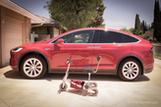 |
August 8-11, 2018 - Tesla Model X Road Trip with TravelScoot assistance vehicle: Report & Photos by Carl Morrison Anaheim Hills, California, to Reno, Nevada, for "Hot August Nights" classic car show. On this year's trip from Anaheim, California to Reno, Nevada (488 miles one way) for the... Read More>> |
 |
September 9, 2017 - Diamond Bar National Drive Electric Week Event: Report & Photos by Carl Morrison Expected Plug-In Vehicles: 2 Tesla Model S, 1 Tesla Model X, 10 Nissan Leaf, 8 Fiat 500e... Read More>> |
 |
August 9-12, 2017 - Tesla Model X Road Trip to "Hot August Nights" classic car show: Report & Photos by Carl Morrison. From Anaheim Hills, California, to Reno, Nevada. We left Anaheim Hills about 5:30 a.m. with our first stop at the Rancho Cucamonga... Read More>> |
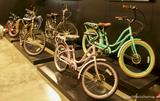 |
Dec 02, 2016 - Pedego E-Bike Experience Center Meetup: Report & Photos by Carl Morrison Pedego® Electric Bikes, the fastest growing electric bicycle company in the United States, manufactures 10 high-quality, innovative models, including cruisers, tandems, commuters, fat-tire bikes, mountain bikes, cargo bikes and... Read More>> |
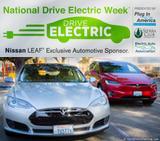 |
Sep 17, 2016 - National Drive Electric Week Long Beach, California: Report & Photos by Carl Morrison Some of Congresswoman Janice Hahn's comments (44th District, California): Good afternoon, Long Beach! This event is one of more than 200 events happening around the country to celebrate National Drive Electric Week. I am one of 2 Members of Congress who drives an EV. I have a Nissan Leaf that I love. It is fun to drive... Read More>> |
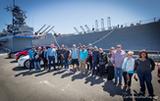 |
May 21, 2016 - Armed Forces Day at the Battleship Iowa: Report & Photos by Carl Morrison Organized by the OC Tesla Club, arrangements had been made for us to park at the bow of the Battleship Iowa. As members began to arrive I photographed several of them and their vehicles at the bow of the ship... Read More>> |
 |
May 14, 2016 - Wine and Wheels: Report & Photos by Carl Morrison A "Wine and Wheels" Lunch and Drive in Temecula Wine Country, California. Organized by the Tesla clubs of both Los Angeles and San Diego... Read More>> |
 |
April 2, 2016 - Formula E ePRIX in Long Beach, California: Report & Photos by Carl Morrison Formula E is a ground-breaking FIA single-seater championship and the world's first fully-electric racing series... Read More>> |
 |
March 28, 2016 - 2016 Tesla Model X P90D Photos by Carl Morrison Photos of new 2016 Tesla Model X P90D taken by Carl Morrison of teslatouring.com/carl/carl, TrainWeb.org/carl and MoKnowsPhotos.com... Read More>> |